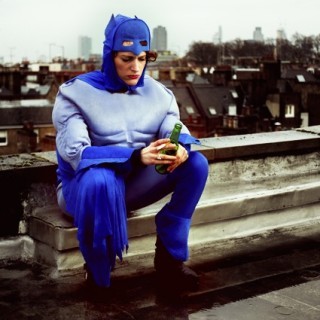Our Country’s Good at Tobacco Factory Theatre
Set towards the close of the 18th Century, Timberlake Wertenbaker’s play centres upon a group of convicts encouraged to put on a play and was first developed and staged in 1988. Received at the time with great accolade, it explores the transformational power of theatre on its participants and questions the idea of crime, punishment, gender, class and justice. It’s no wonder that this play has been a regular choice of exam boards in that there is so much to dissect and discuss. However, the Tobacco Factory Theatre’s new production reminds us that this play is still very worth watching, depicting a story that is captivating and tender, humorous and life affirming.
The play takes place on and around a transport ship that has landed in newly colonised Sydney, Australia. Designed and played in the round, the staging is uncomplicated – a raised wooden floor and a set of functional stacking chairs form a base for the action. Fluorescent tubes give the light a stark, industrial quality; the flickering and static hum adding to the bleakness of the environment in which both the convicts and their Marine chaperones are trapped, awaiting food and essential supplies. The activity of the ship’s passengers is monitored by an indigenous neighbour whose observations in aboriginal language we hear occasionally, coupled with English language interpretation. Though disembodied, his voice reminds us where we are – the hot, harsh and mosquito-ridden environment is not conveyed through the set design. Tannoy announcements signal new scenes, providing short cuts to the huge number of places, people and situations that feature in the story.
Directed by Anna Girvan, an alumnus of the Bristol Old Vic Theatre School, the nine-strong ensemble demonstrate their versatility: each member playing multiple characters, distinguishing roles through appropriate accents and physical characteristics. Depicting variations of gender, age, ethnicity and social class, this role-reversal encourages the audience to question the difference between characters, particularly the convict/jailer divide.
The opening of the play had assembled convicts and audience members visibly flinching; reflexively reacting to the sound of flesh being flogged off-stage. Fifty long lashes later we meet the prisoner; the threat of lashings and hangings weighs heavily upon the convicts with the constant presence of a hangman’s noose overhead reinforcing the fact.
Admiral of the fleet, Captain Philip, believes that the prisoners’ punishment has been served through their dreadful 8 month journey and that Australia offers an opportunity for redemption and rehabilitation. His suggestion to put on a play is taken up by ambitious young Lieutenant Ralph Clarke who assembles a Company out of a raggle taggle group of convicted pickpockets, prostitutes and other uneducated and poverty ridden prisoners. There’s fun and empathy as members try to overcome their personal animosities toward each other before finding unlikely camaraderie and kindness, struggling together towards a collective goal, experiencing hope and humanity in the process.
The play within a play creates a multi-faceted vehicle to observe human behaviour – what is acting and what is real? Can one thing become another? It also allows for some fun with the audience: “People without imagination shouldn’t come to the theatre,” we are told. If you are such a person that possesses imagination. I highly recommend that you come and see this.
Our Country’s Good shows at Tobacco Factory Theatre until 11th May
Image by Mark Dawson, with thanks





